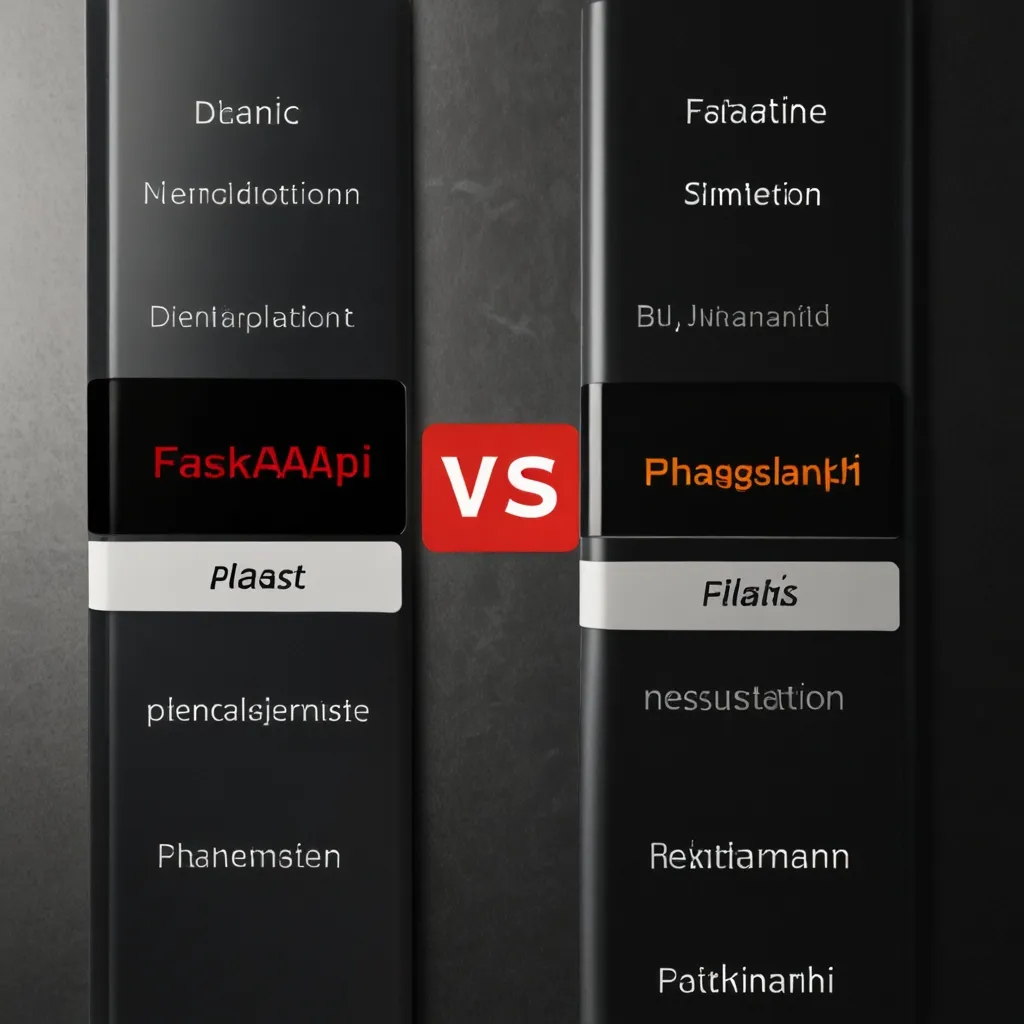Building APIs with Python is almost a rite of passage for web developers. And when it comes to choosing the right framework for the job, you’ll probably hear about Flask and FastAPI. These two heavyweights each have their own charm, making them suitable for different scenarios. So, let’s break it down and see which one could be your new favorite tool for your next API project.
Meet Flask
Flask is like an old friend in the world of Python development. It’s been around for quite some time and has a loyal following. This micro web framework is all about simplicity and ease of use. Think of it as the gateway for many beginners who are just stepping into web development. Flask operates on the “batteries included” philosophy, which means it gives you just enough to get up and running without overwhelming you with a pile of features you might not need.
Starting with Flask is super easy. Here’s a little snippet to whet your appetite:
from flask import Flask
app = Flask(__name__)
@app.route("/")
def hello_world():
return "<p>Hello, World!</p>"
if __name__ == "__main__":
app.run()
See how straightforward that is? In just a few lines, you’ve got a basic web server ready to say hello to the world. It’s no wonder companies like Netflix, Lyft, and Zillow are cool with using Flask for some parts of their stacks. Perfect for simple to medium-sized web applications, Flask has a special place in many developer hearts.
Enter FastAPI
Now, if Flask is the dependable old friend, FastAPI is more like the new kid on the block who’s just brimming with energy. FastAPI is designed with performance in mind, making full use of modern Python features like type hints and asynchronous programming. Built on top of Starlette and using Pydantic for data validation, this framework is all about speed and efficiency.
Check out how easy it is to set up a FastAPI app:
from fastapi import FastAPI
app = FastAPI()
@app.get("/")
def read_root():
return {"Hello": "World"}
To get this running, just a quick command:
$ fastapi dev main.py
Simple, right? FastAPI’s beauty lies in its asynchronous design and automatic documentation, making it a powerhouse for high-performance APIs. If you’re dealing with lots of data and need scalability, FastAPI should definitely be on your radar.
Revving the Engines: Performance and Speed
When it comes to performance, FastAPI really takes the cake. Thanks to its asynchronous nature, it’s capable of handling tons of concurrent connections and I/O-bound tasks without breaking a sweat. If your project demands lightning-fast API responses and the ability to manage a high volume of requests, FastAPI is where you should be looking.
Data Validation and Documentation Made Easy
Speaking of working with data, FastAPI is a beast. Built-in support for data validation using Pydantic models ensures the data going in and out of your API is always in tip-top shape. Plus, it generates automatic documentation in the OpenAPI format, making it super handy for developers to navigate and use your API.
On the Quest for Asynchronous Tasks
FastAPI’s embrace of asynchronous programming means it can handle multiple tasks at the same time without blocking the process. This is gold for applications needing real-time data processing or those expecting heavy traffic. Flask doesn’t have asynchronous support out-of-the-box, but it can be bent to do your bidding with a bit of effort.
Community Vibes
Flask has been around longer and thus enjoys a more extensive community and richer resources. There’s a ton of tutorials, forums, and extensions available if you hit a roadblock or are simply looking to learn something new. FastAPI, though relatively new, is making waves. Its user base is growing fast, lured by its modern features and high performance.
Which Should You Choose?
Deciding between Flask and FastAPI often boils down to the nature of your project:
-
Flask: Choose this if your project is small to medium in size and doesn’t require extreme performance. It’s especially great for web applications that need a straightforward backend solution without too many bells and whistles. Plus, it’s beginner-friendly and bolstered by extensive community support.
-
FastAPI: If your project is all about speed, scalability, and real-time processing, FastAPI should be your go-to. It’s perfect for complex, high-performance applications and microservices that benefit from advanced features like automatic data validation and documentation.
Real-World Scenarios: Putting It All Together
Imagine you’re working on a small web application with a few endpoints to manage user data. Flask would be perfect here. Its simplicity allows you to whip up your backend quickly, making it ideal for small-scale projects or prototypes.
But let’s say you’re building a high-performance API for a fintech application that needs to process tons of transactions in real time. FastAPI would shine in this scenario. Its ability to handle asynchronous tasks and high volumes of requests makes it well-suited for complex, data-driven applications.
The Learning Curve: Easy Does It
Flask is generally easier to pick up, especially if you’re new to web development. Its syntax is clean and doesn’t require diving deep into modern Python features like type hints and async programming. FastAPI, on the other hand, might feel like a steeper climb. But once you get the hang of it, the rewards are immense. You’d find yourself building robust, high-performance APIs with less effort than you’d think.
Wrapping It Up
To sum it up, both Flask and FastAPI have their place in the Python web development landscape. Your choice depends on what you need for your project. If you’re a newbie looking for ease of use and a massive support base, start with Flask. But if you’re eyeing high performance and scalability for your API, FastAPI is the modern tool ready to deliver.
Think of Flask as your handy all-purpose tool, great for getting things done quickly and painlessly. FastAPI, however, is like the specialized high-tech gadget, perfect for those tasks that demand speed and efficiency.
By aligning your project’s needs with the right framework, you’re setting yourself up for smoother development, easier maintenance, and happier users. Whether you go with the tried-and-true Flask or the shiny and speedy FastAPI, you’re in good hands. Happy coding!






